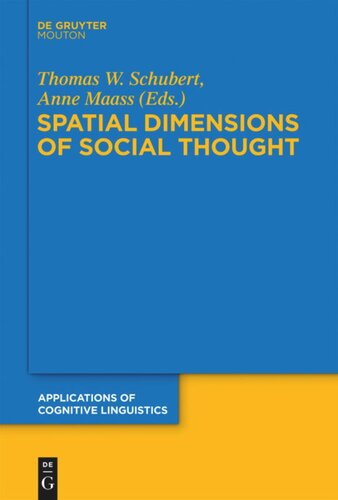

Most ebook files are in PDF format, so you can easily read them using various software such as Foxit Reader or directly on the Google Chrome browser.
Some ebook files are released by publishers in other formats such as .awz, .mobi, .epub, .fb2, etc. You may need to install specific software to read these formats on mobile/PC, such as Calibre.
Please read the tutorial at this link: https://ebookbell.com/faq
We offer FREE conversion to the popular formats you request; however, this may take some time. Therefore, right after payment, please email us, and we will try to provide the service as quickly as possible.
For some exceptional file formats or broken links (if any), please refrain from opening any disputes. Instead, email us first, and we will try to assist within a maximum of 6 hours.
EbookBell Team

5.0
48 reviewsSpace provides the stage for our social lives - social thought evolved and developed in a constant interaction with space. The volume demonstrates how this has led to an astonishing intertwining of spatial and social thought.
For the first time, research on language comprehension, metaphors, priming, spatial perception, face perception, art history and other fields is brought together to provide an integrative view. This overview confirms that often, metaphors reveal a deeper truth about how our mind uses spatial information to represent social concepts. Yet, the evidence also goes beyond this insight, showing for instance how flexible our mind operates with spatial metaphors, how the peculiarities of our bodies determine the way we assign meaning to space, and how the asymmetry of our brain influences spatial and face perception. Finally, it is revealed that also how we write language - from left to right or from right to left - shapes how we perceive, interpret, and produce horizontal movement and order. The evidence ranges from linguistics to social and spatial perception to neuropsychology, seamlessly integrating such diverse findings as speed in word comprehension, children's depictions of abstract concepts, estimates of the steepness of hills, and archival research on how often Homer Simpson is depicted left or right of Marge.
The chapters in this book offer a topology of social cognition and explore the pivotal role language plays in creating links between spatial and social thought.